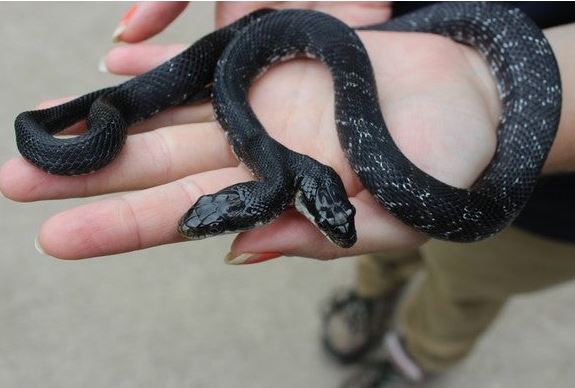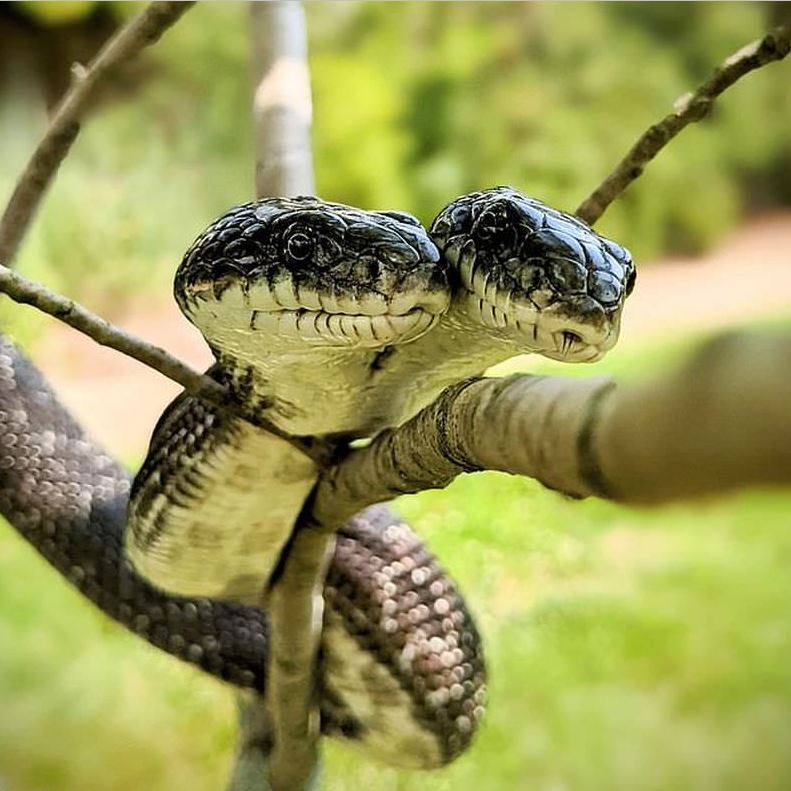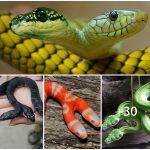The amazing longevity of two-headed snakes despite the extremely low survival rate
The fact that a rare two-headed snake is still alive as it approaches its 17th year astounded its keepers.
The black rat snake, which is actually two snakes sharing one slithering body, has grown to five feet in length and has already outlived its wild counterparts. In 2005, a boy discovered the rare serpent in his yard in Delta, Missouri, and brought it to the Cape Girardeau Conservation Nature Center.
According to Snake expert Steve Allain, a council member of the British Herpetological Society, the existence of a two-headed snake was already a one-in-a-100,000 long shot, and the fact that it would live to such a ripe old age made it a one-in-a-hundred-million wonder.
‘I know of another two-headed snake that lived until it was 20, so it’s not impossible for them to live that long,’ he said. It is, however, extremely unlikely. I’d say it’s probably one in a hundred million.’
A naturalist at the conservation center, Alex Holmes, described some of the challenges he faced in keeping such an unusual snake alive.
‘A normal snake their size would easily consume full-sized mice,’ he said. However, their conjoined spine makes swallowing all but very small, young mice, which they take thawed from frozen, more difficult. Because the heads are quite competitive when it comes to eating, we cover one head at a time with a drinking cup and feed each one separately.
To avoid a ‘traffic jam’ from the left and right head’s meals meeting in the esophagus, we wait for a period of time after the food has passed their junction. They share a stomach, but we feed them separately to stimulate their natural instincts and provide mental stimulation. The snake, which is technically two snakes sharing one body, might not have survived in the wild. ‘Most conjoined hatchlings would perish,’ Alex said.’Our ‘twins’ struggle to decide which path to take, arguing as sisters do – which is fine for a life of leisurely captivity. However, if a hungry hawk, skunk, or raccoon happened to come along in the wild, their slow reaction to danger would make them an easy meal.’ Even in captivity, survival is uncommon.
Such long odds, according to Paul Rowley, a herpetologist at the Liverpool School of Tropical Medicine, are impossible to calculate. ‘It’s difficult enough with any normal hatchling or newborn snake – within a group, there will be some that will die for no known real reason,’ he explained.
However, with animals that are conjoined, such as snakes with two heads, there are issues with how compatible they are to each other, what organs are shared, and how they are cared for. And, as with any conjoined twin, if one becomes ill or has organ failure or problems, the other is bound to suffer. As a result, you’re doubling the problem.’ To have lasted 17 years is quite an accomplishment.’
When an individual egg is fertilized and begins to divide into twins but does not fully separate, snakes can be born with two heads. The developing embryo in this case split partially at the top but did not separate further down. Its exact birth date is unknown. Male black rat snakes reach sexual maturity at seven years, while females reach sexual maturity at nine years.
Their main predators are foxes, hawks, and owls, which they scare away by coiling their bodies and vibrating their tails in dead leaves to mimic the rattle of a rattlesnake. They are shy creatures who avoid conflict, but have been known to strike when threatened. They are not poisonous.
Hits: 80











